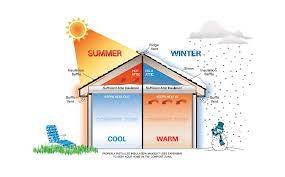I. Introduction
The concept of a smart home, once a futuristic idea, is now a reality reshaping the way we live. Home automation has evolved significantly, offering a seamless blend of technology and comfort. This article explores the future of home automation, delving into the innovative technologies that define smart homes and the transformative impact they have on daily living.
II. The Evolution of Smart Homes
a. From Basic Automation to Comprehensive Integration
- Early Automation Systems: Initial home automation systems focused on basic functions like lighting and thermostat control.
- Integration of Devices: Modern smart homes integrate a diverse range of devices, creating a cohesive and interconnected living environment.
b. Rise of Artificial Intelligence (AI) Integration
- AI-Powered Devices: Smart home devices leverage AI for enhanced learning and adaptive responses to user preferences.
- Intelligent Assistants: Voice-activated intelligent assistants, like Amazon Alexa and Google Assistant, have become central to smart home control.
III. Key Technologies Shaping the Future
a. Internet of Things (IoT)
- Connected Devices: The IoT connects everyday devices, allowing them to communicate and share data for coordinated actions.
- Sensors and Actuators: Smart sensors and actuators enhance responsiveness, automating actions based on real-time data.
b. 5G Connectivity
- High-Speed Connectivity: 5G technology enables faster and more reliable communication between smart devices.
- Low Latency: Reduced latency in 5G enhances the responsiveness of smart home devices and applications.
IV. Innovative Applications in Smart Homes
a. Smart Lighting Systems
- Adaptive Lighting: AI-driven lighting systems adjust brightness and color temperature based on user preferences and natural lighting conditions.
- Energy Efficiency: Automated lighting contributes to energy conservation through optimized usage.
b. Intelligent Climate Control
- Learning Thermostats: Smart thermostats learn user behavior to optimize heating and cooling, increasing energy efficiency.
- Climate Zones: Smart homes allow for the customization of climate control in different zones, enhancing comfort.
V. Security and Surveillance Advancements
a. Smart Security Systems
- Integrated Cameras and Sensors: AI-powered cameras and sensors provide real-time monitoring and alerts.
- Facial Recognition: Facial recognition technology enhances security by identifying authorized individuals.
b. Biometric Access Control
- Fingerprint and Iris Scanners: Biometric access control systems provide secure entry without the need for traditional keys.
- Voice Recognition: Voice-based access adds an additional layer of security.
VI. Future Trends in Smart Home Living
a. Health and Wellness Integration
- Health Monitoring Devices: Smart homes integrate health monitoring devices to track vital signs and provide personalized health insights.
- Mental Wellness Support: AI-driven systems contribute to mental wellness by adjusting ambient conditions and offering personalized relaxation experiences.
b. Robotics and Automation
- Robotic Assistants: Robotics in smart homes assist with household tasks, from cleaning to meal preparation.
- Automated Delivery Systems: Drones and automated delivery systems streamline package deliveries within smart home environments.
VII. Addressing Challenges and Concerns
a. Privacy and Data Security
- Data Encryption: Implementing robust data encryption safeguards user information from potential breaches.
- User Control Settings: Empowering users with control over data sharing settings enhances privacy.
b. Interoperability Standards
- Industry Collaboration: Establishing common standards ensures interoperability among different smart devices and platforms.
- Open-Source Solutions: Open-source initiatives contribute to the development of universally compatible smart home systems.
VIII. Conclusion
The future of home automation envisions a lifestyle where technology seamlessly integrates into our daily lives, enhancing convenience, safety, and well-being. As smart homes continue to evolve with AI, IoT, and innovative applications, the possibilities are limitless. Addressing challenges such as privacy concerns and interoperability standards is crucial to realizing the full potential of smart home living. The journey toward a smarter, more connected home is an exciting adventure, offering a glimpse into a future where our living spaces adapt and respond intelligently to our needs.
FAQs
- Q: How does AI enhance the functionality of smart home devices?
- A: AI enhances smart home devices by providing adaptive responses to user preferences, learning behavior patterns, and facilitating seamless integration between different devices.
- Q: What role does 5G connectivity play in the future of smart homes?
- A: 5G connectivity enables faster and more reliable communication between smart devices, reducing latency and enhancing the responsiveness of smart home applications.
- Q: How can smart homes contribute to energy efficiency?
- A: Smart homes contribute to energy efficiency through features like adaptive lighting, learning thermostats, and optimized climate control, which reduce energy consumption based on user behavior and preferences.
- Q: What are some future trends in smart home living?
- A: Future trends include the integration of health monitoring devices for personalized wellness insights, the expansion of robotics for household tasks, and the development of automated delivery systems using drones.
- Q: What challenges are associated with the future of home automation?
- A: Challenges include privacy and data security concerns, which can be addressed through measures like robust data encryption and user control settings. Interoperability standards are also crucial for ensuring compatibility among different smart devices and platforms.






